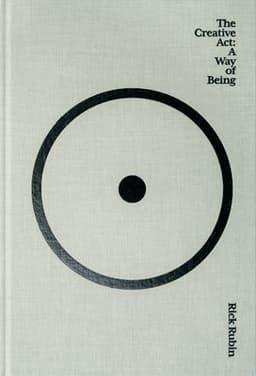
The Creative Act Book Summary
A Way of Being
Book by Rick Rubin
Summary
In "The Creative Act: A Way of Being," Rick Rubin shares insights from a lifetime of making art, distilling the creative process into a spiritual practice accessible to anyone, where ideas are channeled from the collective unconscious and shaped into meaningful works through the artist's unique filter, ultimately connecting us back to our shared humanity.
Sign in to rate
Average Rating: 5
Creativity Is Our Birthright
The book opens by emphasizing that creativity is a fundamental part of being human, not a rare ability. We create every day through conversations, solutions to problems, and the way we perceive and compose our reality. Living as an artist is about paying attention, being sensitive, and making attuned choices. Our entire life is a form of self-expression and a work of art.
Section: 1, Chapter: 1
Tune In To The Cosmic Timetable
- The universe functions on rhythms that we don't control, like the seasons. Artists are on this "cosmic timetable" just like nature.
- Ideas ripen and find expression through makers on a schedule. If you have an exciting idea but don't act on it, it may manifest through someone else.
- The best artists are the ones most sensitive to picking up on what wants to emerge at a particular time. Attune yourself to these rhythms.
Section: 1, Chapter: 2
Expand Your Awareness To Receive More
A practice is repeating an exercise to cultivate an open, aware state.
- Build rituals into your day to expand awareness, like taking deep breaths upon waking, eating meals mindfully, going on nature walks, etc.
- The purpose is to evolve how you see the world outside of these practices, to live in constant openness to receiving.
- Awareness needs constant refreshing. Keep the practice alive by reinventing it.
Section: 1, Chapter: 3
How to Make a Life
"We make a living by what we get, we make a life by what we give." - Winston Churchill
Section: 1, Chapter: 4
Nature Provides Endless Inspiration
The most absolute, enduring works we can experience are in nature. Endless awe and beauty can be found in the changes of light, the seasons, the moon and stars. We don't need to understand nature to appreciate it. Communing with nature connects us to our own nature. Notice when your breath is taken away by the natural world. Let it enrich your life and set an example for your own creations.
Section: 1, Chapter: 5
Cultivate Beginner's Mind
The book shares the story of the AI AlphaGo beating the world champion at the ancient Chinese game Go. By learning the game from scratch, without human biases, AlphaGo made a totally unique move no human ever had in thousands of years, which led to its groundbreaking win. This exemplifies "beginner's mind" - approaching something with fresh eyes, not limited by conventions. As artists, strive to see the extraordinary in the mundane, without preconceived ideas constraining you. What new possibilities emerge?
Section: 1, Chapter: 6
Flaws Make Us Human
- All artists deal with self-doubt. The sensitivity that allows you to make art also makes you vulnerable.
- Flaws in your work reflect your humanity. If insecurity is part of who you are, your art will be more truthful for it.
- Reframe insecurities as a guiding force. They only hinder you if they stop you from sharing your heart.
- Your desire to create must be greater than your fear. Accept the self-doubt as part of the process rather than trying to eliminate it.
Section: 1, Chapter: 7
Set The Stakes Low To Play Freely
See your work as an experiment you can't predict the outcome of. There is no right or wrong, just free play. Aiming for perfection gets in the way of fun. Find comfort in the process, not the results. Setting the bar low frees you to explore without attachment. Active experimentation leads to happily surprising yourself.
Section: 1, Chapter: 7
Distraction As A Creative Strategy
Distractions like driving, walking, swimming, etc. can keep part of your mind busy while freeing the rest to receive ideas. When stuck, step away from a project to allow solutions to emerge. Hold the problem lightly in the back of your mind while doing something else. Physical movement can help shake ideas loose. Engage in activities you can do on autopilot. Distraction is not procrastination. It's a deliberate technique to support the work.
Section: 1, Chapter: 8
Test Every Idea
There's a gap between imagination and reality. An idea that seems brilliant in your mind may not work in practice, and vice versa. The only way to know if an idea works is to test it out, especially the ones that seem unlikely.
- Look for polarities and see how they impact the work. When working with others, demonstrate ideas rather than just discussing them. Words don't do ideas justice.
- Give yourself permission to be wrong and be surprised. Follow the work where it wants to go.
Section: 1, Chapter: 12
Follow The Excitement When Choosing What To Craft
Notice which experiments give you a feeling of excitement, of leaning forward and wanting more. Let that guide your choices. There's no formula for knowing which idea will yield the best results. Go with what moves you. If several directions excite you, consider crafting more than one. Working on multiple projects cultivates healthy detachment, but make sure to keep referring back to your original inspirations to ensure you're staying true to the essence.
Section: 1, Chapter: 15
Don't Let Perfectionism Derail You
Extending a project too long can lead to disconnection. You may change and lose enthusiasm. Avoid "demo-itis" - getting so used to an early draft that you resist changes. Limit listening to unfinished versions.
If your abilities don't match your vision yet, still move forward. The practical version you can execute may be better than the ideal you imagined. When you lose momentum, finish the parts you can. Solutions often reveal themselves when the rest is in place. Skipping problem areas and returning later makes them feel more achievable.
Section: 1, Chapter: 17
Be Open To The Lightning Bolt
Inspiration is like a lightning bolt - a sudden flash of information or insight. To harness it:
- Prepare the conditions for lightning to strike. Cultivate awareness, space and openness.
- Ride the lightning when it comes. Put everything aside and follow the energy of an epiphany for as long as it lasts, capturing all you can.
- Do the work to support the lightning. Whether inspired or not, show up and put in the labor to manifest the vision.
Section: 1, Chapter: 19
Expect a Surprise
"I begin with an idea and then it becomes something else." - Pablo Picasso
The book advises to engage wholeheartedly in the work without expectations. Be open to surprises. What you start out making may transform into something you never imagined through the process. Follow the work where it wants to go and let it take on a life of its own.
Section: 1, Chapter: 20
Embrace Uncertainty And Follow The Process
Starting a new project often comes with anxiety about how it will turn out. The end result is ultimately uncertain and out of your control. What helps is trusting the process. If you take each step into the unknown with commitment, applying all you've learned, you will get where you're meant to go. Have faith in experimentation. Test ideas, build on what works, and allow yourself to be wrong. Each attempt brings you closer. Proceed as if the answer is inevitable. It's there waiting to be found, even if not in the form you initially imagined.
Section: 1, Chapter: 22
Pursuing Sincerity Rarely Leads There
Many artists strive to create work that expresses their truest self. However, sincerity is not something that can be forced or faked. Aiming for it directly often backfires, leading to work that feels inauthentic or saccharine. Sincerity is better approached as a byproduct. It arises when we stop performing an idea of ourselves and simply allow our humanity to come through in all its complexity and contradiction. Trying to be who you think you are constricts expression. Art helps us discover who we are by accessing deeper parts of the psyche we can't deliberately control.
Section: 1, Chapter: 23
Making Art Is Play, Not Work
Too much seriousness burdens the creative process. It misses the lightness of pure, childlike enjoyment.
- Approach artmaking as play - imaginative, free and open-ended. Be willing to experiment, make messes, and follow your curiosity without judgment.
- Avoid putting too much pressure on results too soon. Just show up each day and explore with a sense of adventure.
- Periodically reconnect with beginner's mind, remembering the simple joys of learning and discovery. Fall in love with the craft again and again.
Section: 1, Chapter: 24
Art Has No Inherent Meaning Or Purpose
As humans, we grasp for explanations and storylines to make sense of what we do. But art doesn't need a clearly defined "why" to justify itself. Examining your motivations too closely may only generate limiting beliefs. The act of creation is meaning enough. If you enjoy what you're making in the moment, keep going. Reasoning can be applied after the fact, but it's not a prerequisite. Concepts of purpose often say more about our desire for certainty than any absolute truth. Focus on the immediate experience of creating and let the rest take care of itself.
Section: 1, Chapter: 26
Success Comes From Within
Don't measure success by external markers like sales, fame or praise. Those are unreliable and out of your control.Real success happens internally. It's the fulfillment of engaging the process fully and bringing a work to completion. Notice when you're happy with a piece and excited to share it. That's when it's done. Everything after that is secondary. Each finished project is a personal triumph that no one else can give or take away. Claim it and move on to the next.
Section: 1, Chapter: 27
Context Is Part Of The Art
In 1917, Marcel Duchamp submitted a porcelain urinal signed "R. Mutt" to an art show. This act ignited controversy and changed perceptions of what could be considered art.
Duchamp's "Fountain" showed how context and framing transform how we see an object. The same item that would be unremarkable in a bathroom became a centerpiece for debate in a gallery. As an artist, consider context as an element you can play with. How does putting your work in a surprising time, place or format shift its meaning and impact?
Section: 1, Chapter: 29
There Is Always More To Create
Treat your creativity as an abundant, renewable resource, not a scarce commodity to hoard.
- Freely use and share your ideas knowing more will come. Holding back only dams the flow.
- Don't get stuck perfecting one project endlessly. Part of the artist's job is to complete and let go so you can begin again.
- Think of each work as a step in a ongoing journey, not a final destination. Your total creative output will always exceed any single piece.
Section: 1, Chapter: 30
Art Connects Us Beyond Words
Ultimately, we make art to express our distinct point of view and connect it with others. On the surface, this seems like an act of self-interest. But the deeper we go into our individuality, the more it links us back to our shared humanity. By following what's most personal and particular to us, we end up highlighting the universal. Art translates our inner world into a form others can experience and relate to. It bridges divides and reveals our fundamental oneness. When someone resonates with our creation, it affirms that no matter how different we may seem, we're all participating in the same cosmic story.
Section: 1, Chapter: 32
Making The Complicated Simple
"Making the simple complicated is commonplace; making the complicated simple, awesomely simple, that's creativity." - Charles Mingus
The book encourages paring your work down to its essential core through editing. Cut out everything that isn't needed until only the vital remains. Avoid overcomplicating or cluttering the piece. Aim to communicate the idea in its simplest, most elegant form. Constraints focus creativity and reveal the heart of what you're trying to say.
Section: 1, Chapter: 34
Self-Expression Serves Something Greater
Artists often feel called to create without fully understanding why. The drive to make art comes from a place beyond the individual ego or will. It's an instinctive response to participate in the ongoing evolution of nature and culture. By making things and sharing them, we each play a role in pushing humanity forward, even if we can't see the whole picture. Our creations become artifacts of a particular time and place that others can build on. Through this process, we discover and rediscover our deep connection to the universe and each other. Ultimately, self-expression serves more than the self. It's an opportunity to add our unique voice to the larger cosmic story.
Section: 1, Chapter: 35
Related Content
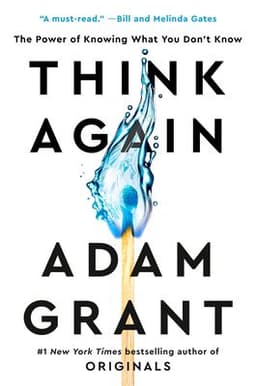
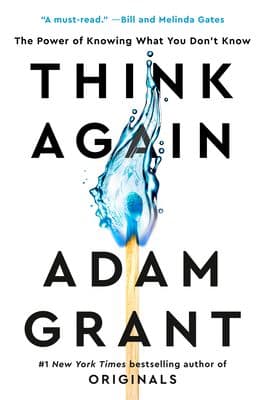
Think Again Book Summary
Adam Grant
Think Again is a compelling exploration of the power of knowing what you don't know, and how embracing the joy of being wrong and actively questioning your opinions can help you make better decisions
Think Again is a compelling exploration of the power of knowing what you don't know, and how embracing the joy of being wrong and actively questioning your opinions can help you make better decisions
Psychology
Business
Personal Development
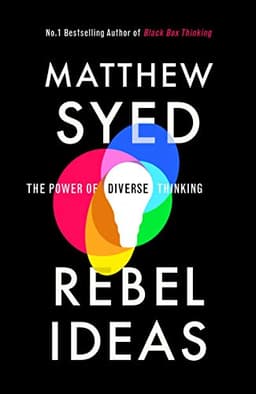
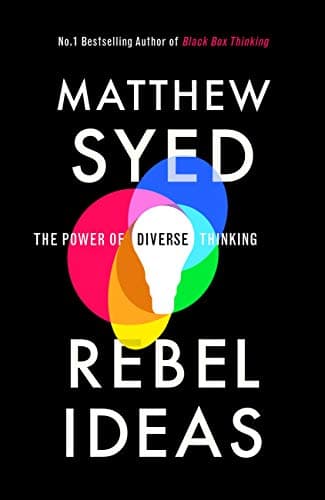
Rebel Ideas Book Summary
Matthew Syed
Matthew Syed reveals the vital ingredient missing from our understanding of success: cognitive diversity. Rebel Ideas shows how bringing together different insights, perspectives and thinking styles turbocharges creativity, problem-solving and decision-making, to improve performance in today's complex world.
Matthew Syed reveals the vital ingredient missing from our understanding of success: cognitive diversity. Rebel Ideas shows how bringing together different insights, perspectives and thinking styles turbocharges creativity, problem-solving and decision-making, to improve performance in today's complex world.
Psychology
Innovation
Business
Leadership

